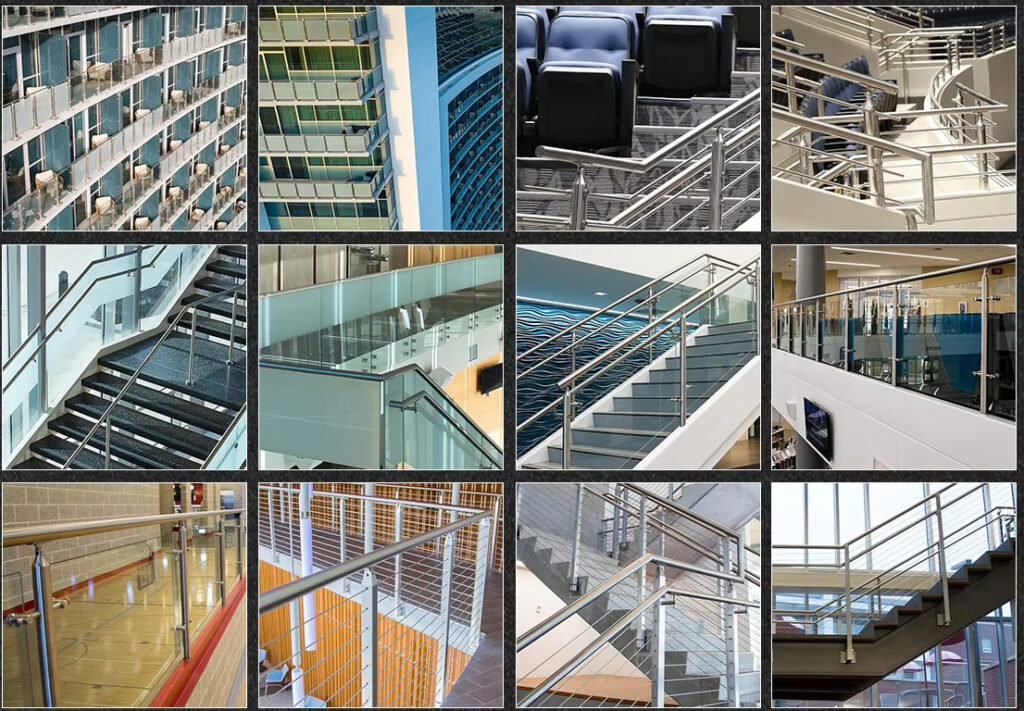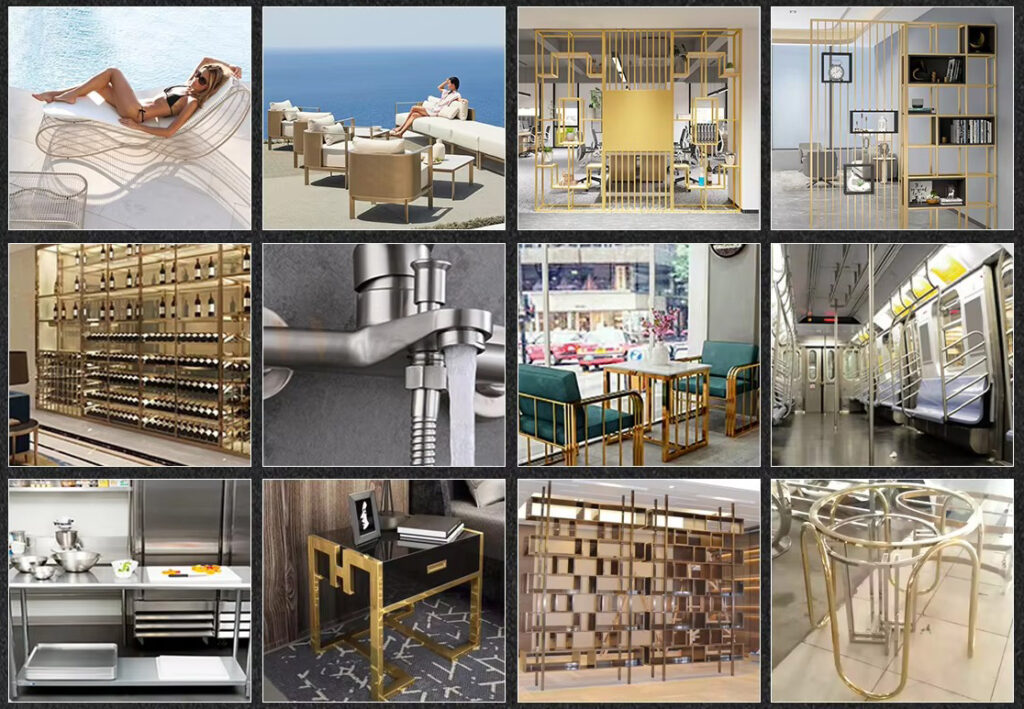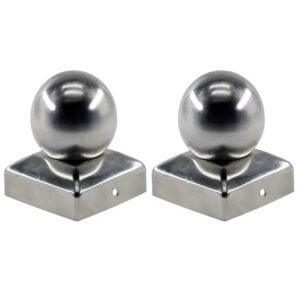
Post caps & end caps (round, square, decorative)
Post caps & end caps in 316L stainless steel. 23 years precision manufacturing for decorative applications worldwide. Request quote today.

Post caps & end caps in 316L stainless steel. 23 years precision manufacturing for decorative applications worldwide. Request quote today.
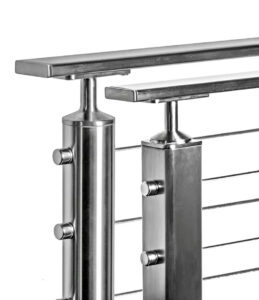
Square stainless steel posts in 304/316L grades. 23 years precision manufacturing for coastal projects worldwide. Request quote today.
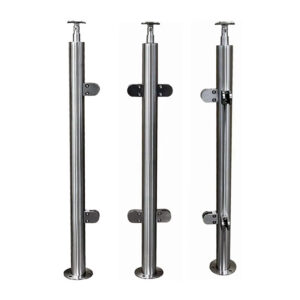
Stainless steel posts in 304/316L grades. 23+ years ODM fabrication for marine & commercial applications. Contact factory today.
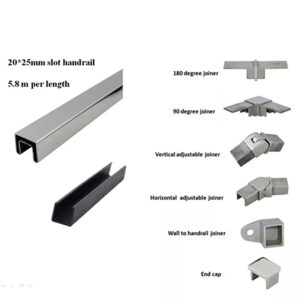
Square top rail components in 316L stainless steel. 23+ years precision manufacturing for global applications. Contact factory today.
Project-specific hardware in 316L stainless steel. 23 years delivering tailored solutions for specialized projects worldwide. Get factory quote today.
Non-standard size components in 316L stainless steel. 23+ years ODM manufacturing for unique sizing requirements globally. Contact us today.
| Specification | Our Stainless Steel End Fittings | Aluminum End Fittings | Competitive Advantage |
|---|---|---|---|
| Material Grade | 304/316 Marine Stainless Steel | 6061-T6 Aluminum Alloy | Superior corrosion resistance and longevity |
| Tensile Strength | 70,000+ PSI (316 grade) | 42,000 PSI maximum | 67% higher load capacity |
| Corrosion Resistance | 500+ hours salt spray | 200 hours maximum | 150% superior marine environment performance |
| Operating Temperature | -40°C to +400°C | -30°C to +150°C | Extended thermal range capability |
| Thread Tolerance | ±0.05mm precision | ±0.15mm standard | 200% more precise manufacturing |
| Cable Compatibility | 1/8″ to 3/8″ diameter | Limited size range | Universal cable size accommodation |
| Installation Torque | 25-35 ft-lbs consistent | 15-25 ft-lbs variable | Enhanced grip strength and reliability |
| Service Life | 25+ years guaranteed | 5-10 years typical | 300% longer operational lifespan |
Superior Mechanical Properties vs. Alternative Materials
Premium stainless steel cable end fittings deliver 70% higher tensile strength compared to aluminum alternatives, ensuring reliable cable termination under maximum design loads. While aluminum fittings experience galvanic corrosion when paired with stainless steel cables, our 304/316 stainless steel construction provides material compatibility that eliminates electrochemical degradation and maintains structural integrity throughout the system’s lifespan.
Advanced Threading and Tensioning Design
Our precision-machined threading systems provide consistent 25-35 ft-lbs installation torque compared to aluminum fittings that strip at lower torque values. The self-locking mechanism prevents cable slippage under dynamic loading, while threaded barrel construction allows for precise tension adjustment that aluminum snap-fit designs cannot achieve.
Marine-Grade Corrosion Protection
316 stainless steel cable end fittings withstand 500+ hours of salt spray exposure without degradation, compared to aluminum fittings that fail within 200 hours. The chromium-nickel-molybdenum alloy composition provides inherent passivation properties that self-repair surface damage, eliminating the coating maintenance required by plated steel alternatives.
Temperature Stability and Performance
Stainless steel end fittings maintain dimensional stability from -40°C to +400°C, preventing the thermal expansion issues that cause aluminum fittings to loosen during temperature cycling. This thermal performance is critical for outdoor installations where daily temperature variations would compromise aluminum fitting integrity.
Coastal Resort Cable Railing Systems
Beachfront hotels and marina installations require 316 marine-grade end fittings that resist salt spray corrosion exceeding 1,000 hours exposure. Our fittings maintain cable tension and structural integrity in environments where aluminum alternatives fail within 18 months, eliminating costly emergency repairs during peak tourism seasons.
Commercial High-Rise Balcony Railings
Urban office buildings and residential towers utilize precision-threaded end fittings for cable railing systems spanning 50+ linear feet. The superior tensile strength prevents cable failure under wind loading conditions that would cause aluminum fitting failure, ensuring occupant safety and building code compliance.
Industrial Platform Access Systems
Manufacturing facilities with elevated walkways require chemical-resistant end fittings that withstand process vapor exposure and temperature fluctuations. Our 316 stainless steel construction maintains cable tension in environments where aluminum fittings would corrode or lose grip strength within 2-3 years.
Luxury Residential Staircase Installations
High-end homes with curved staircases demand aesthetically superior end fittings with mirror polish finishes that complement architectural design elements. The corrosion-free performance eliminates discoloration issues common with aluminum fittings, preserving property value throughout decades of service.
Marine Dock and Boardwalk Systems
Harbor facilities and waterfront restaurants install heavy-duty cable end fittings on floating dock railings subjected to tidal movement and wave action. The superior fatigue resistance prevents loosening under dynamic loading conditions that cause aluminum fitting failure in marine environments.
Ski Resort and Mountain Lodge Railings
Alpine properties experience extreme temperature cycling and UV exposure that degrades aluminum fittings and causes cable tension loss. Our cold-weather rated end fittings maintain performance at -40°C while resisting UV-induced material degradation that affects coated alternatives.
What’s the difference between tensioning and non-tensioning cable end fittings?
Tensioning end fittings incorporate threaded adjustment mechanisms that allow precise cable tension control, typically installed at one end of each cable run. Non-tensioning end fittings provide fixed termination points and are used at the opposite end. Most installations require one tensioning and one non-tensioning fitting per cable to achieve proper 350-pound tension requirements.
How do 304 and 316 stainless steel grades compare for cable end fitting applications?
304 stainless steel provides excellent performance for indoor and mild outdoor environments, offering superior strength and corrosion resistance compared to aluminum. 316 grade includes molybdenum for enhanced chloride resistance, making it essential for coastal properties within 5 miles of saltwater, pool areas, and marine environments where salt spray exposure exceeds 200 hours annually.
What installation torque specifications apply to stainless steel cable end fittings?
Our threaded end fittings require 25-35 ft-lbs installation torque to achieve proper cable grip and prevent slippage. Over-torquing can damage threads, while under-torquing results in cable pull-out under load. Aluminum fittings typically strip at lower torque values, making consistent installation difficult and compromising long-term reliability.
Can cable end fittings accommodate different cable diameters and constructions?
Yes, our end fittings are designed for 1/8″, 3/16″, and 1/4″ diameter cables with 1×19 and 7×7 construction types. The precision-machined internal geometry provides optimal grip strength across cable sizes, while maintaining compatibility with both flexible and rigid cable constructions used in different railing applications.
How do stainless steel end fittings perform in high-temperature environments?
Stainless steel maintains structural integrity and grip strength from -40°C to +400°C, far exceeding aluminum limitations. Commercial kitchen installations, industrial process areas, and desert climates benefit from this thermal stability. Aluminum fittings soften at elevated temperatures, causing cable tension loss and potential safety hazards.
What building codes and safety standards govern cable end fitting installations?
Cable railing systems must maintain minimum 350-pound cable tension to meet IBC load requirements. End fittings must be capable of withstanding 1.5 times design loads during proof testing. Our stainless steel fittings exceed these requirements with documented load testing certification and engineering calculations for permit approval.
Are there special considerations for corner and angled cable runs?
True 90-degree corners require separate cable terminations at each post because cable physics cannot transmit tension around sharp corners. Our pivot-style end fittings accommodate angled terminations up to 30 degrees from perpendicular, while maintaining full load capacity. Continuous corner runs require intermediate tensioning to maintain proper cable tension.
How do maintenance requirements compare between stainless steel and aluminum end fittings?
Stainless steel end fittings require only periodic inspection and cleaning with pH-neutral solutions every 6-12 months depending on environmental exposure. Aluminum fittings require more frequent inspection for corrosion signs, thread degradation, and tension loss. Marine environments may require aluminum fitting replacement every 3-5 years, while stainless steel provides 25+ year service life.
Building Code Compliance Standards
Cable end fittings must comply with IBC Section 1013.3 guard requirements and IRC Section R312.1.3 residential standards for load-bearing capacity. All fittings undergo ASTM F1169 Standard Test Method for load testing with documented proof loads at 1.5 times design requirements. Installation procedures follow AWI Quality Standards for architectural woodwork applications.
Material Specifications and Certifications
End fittings manufactured from ASTM A276 stainless steel bar stock with certified mill test certificates documenting chemical composition and mechanical properties. Threading specifications comply with ANSI/ASME B18.6.3 standards for dimensional accuracy and thread engagement requirements. Marine-grade 316 fittings meet NACE SP0169 atmospheric corrosion guidelines.
Load Testing and Performance Verification
All production lots undergo tensile testing per ASTM A370 standards with documented ultimate tensile strength verification exceeding 70,000 PSI. Proof load testing at 1.5 times working load demonstrates safety margins required by building codes. Cable grip testing confirms minimum 3,500-pound pull-out resistance for 1/4″ cable applications.
Corrosion Resistance Testing
Salt spray testing per ASTM B117 standards demonstrates 500+ hour performance for 316 grade applications. Pitting resistance evaluation follows ASTM G48 Method A for chloride exposure conditions. Atmospheric exposure testing per ASTM G7 standards verifies long-term performance in urban and industrial environments.
Quality Assurance and Manufacturing Standards
Production follows ISO 9001:2015 quality management with documented material traceability and inspection procedures. CNC machining maintains ±0.05mm threading tolerance for consistent installation torque and cable grip performance. Surface finish standards achieve 32 Ra maximum for aesthetic compatibility with architectural applications.
Installation and Safety Compliance
Installation procedures meet OSHA 1926.502 fall protection standards for temporary and permanent railing systems. End fitting spacing calculations follow structural engineering guidelines for maximum cable span without intermediate support. Professional installation certification available through certified railing contractor programs for complex commercial applications.

